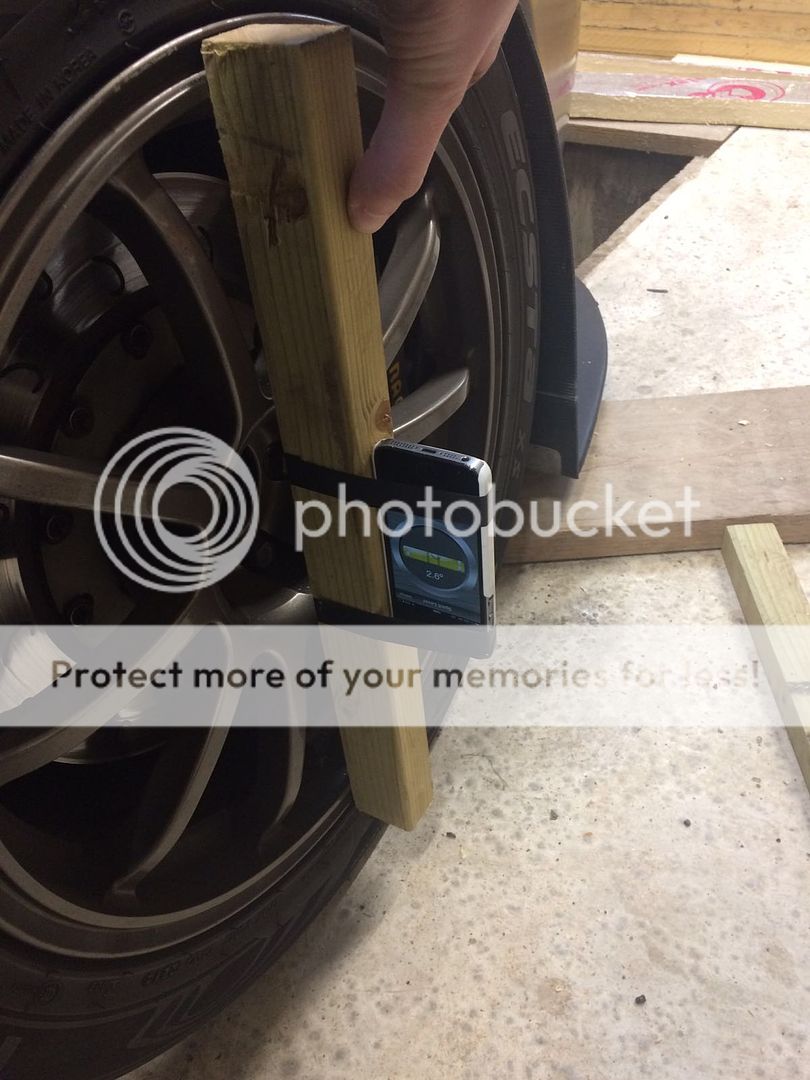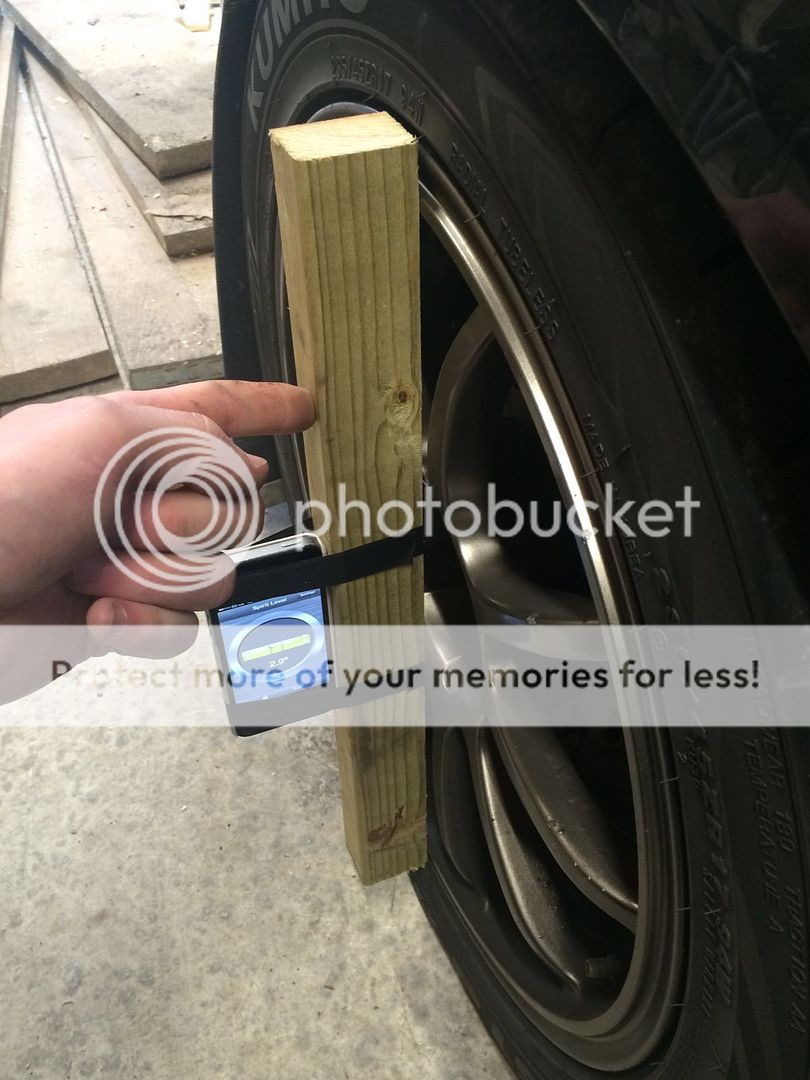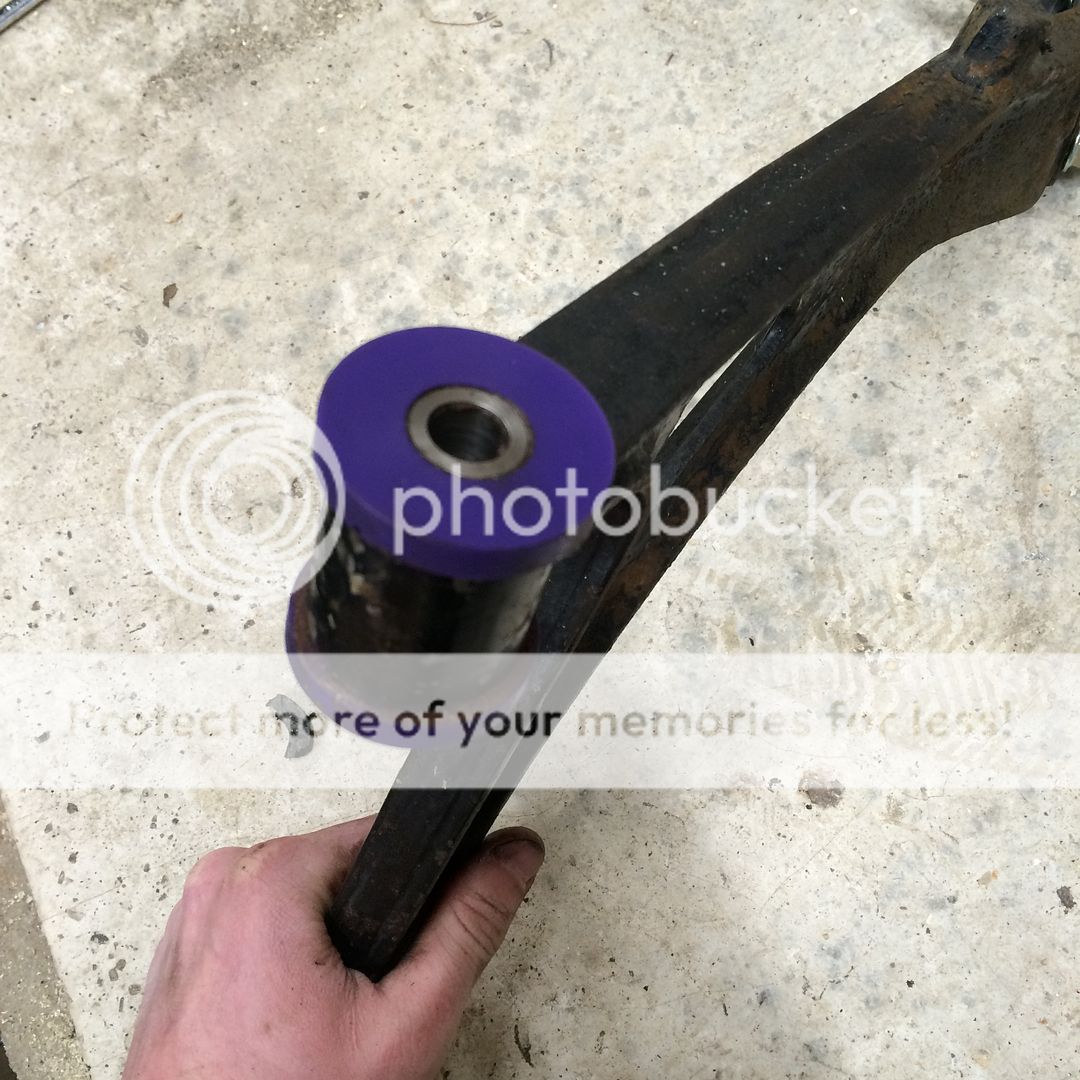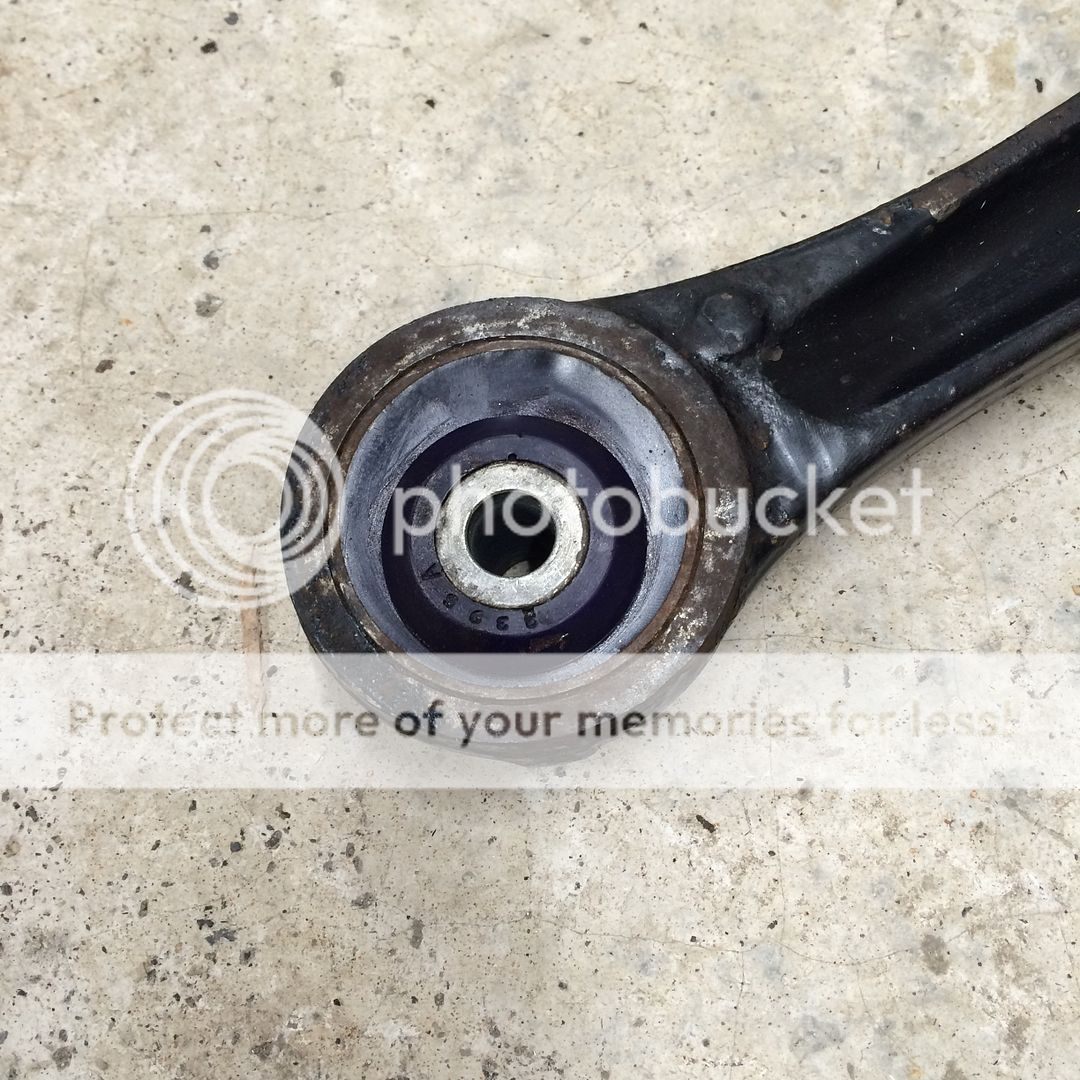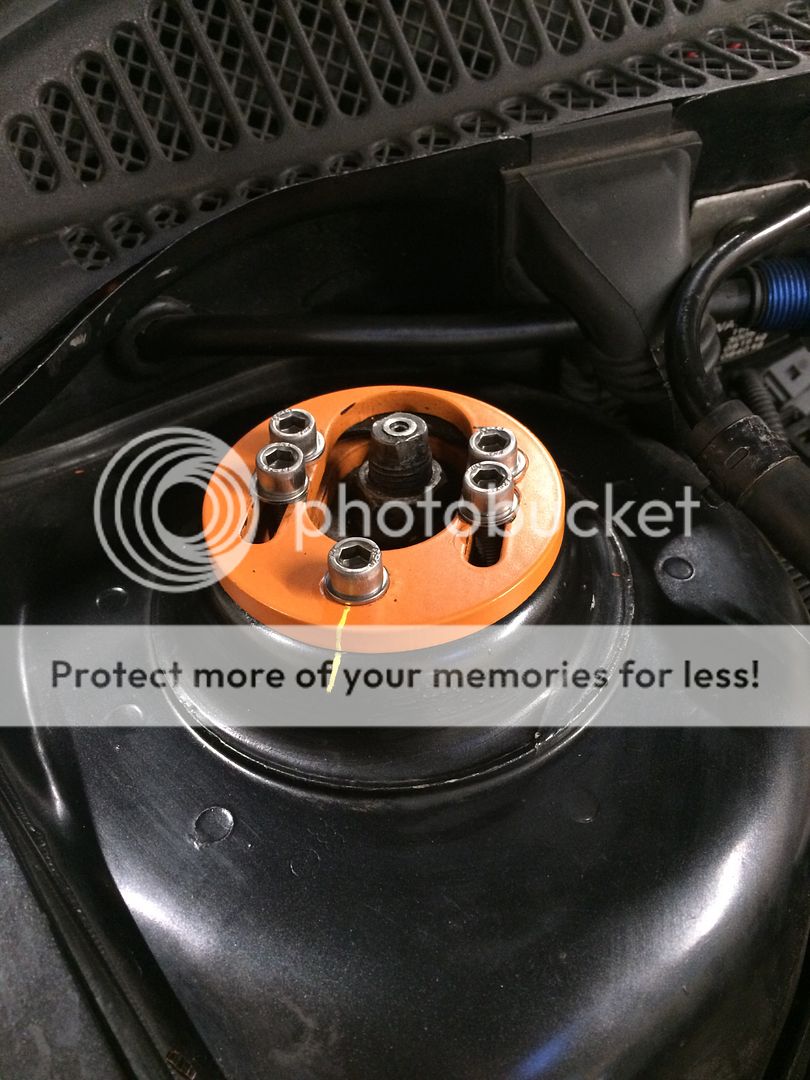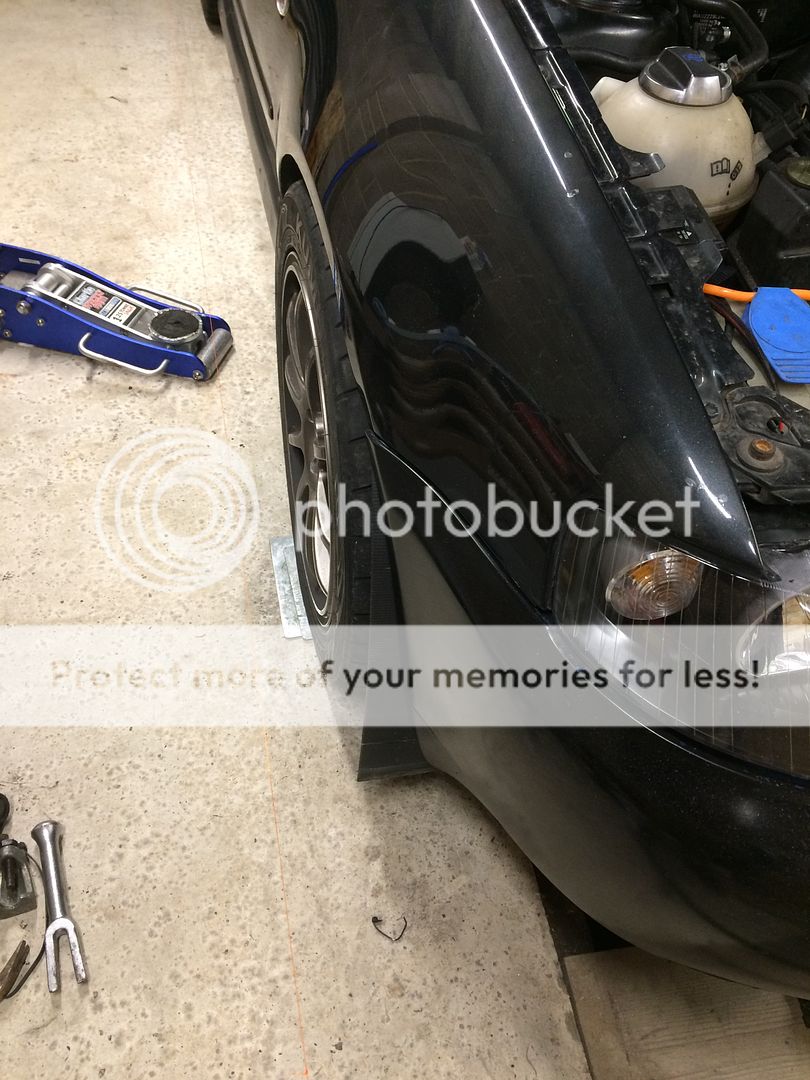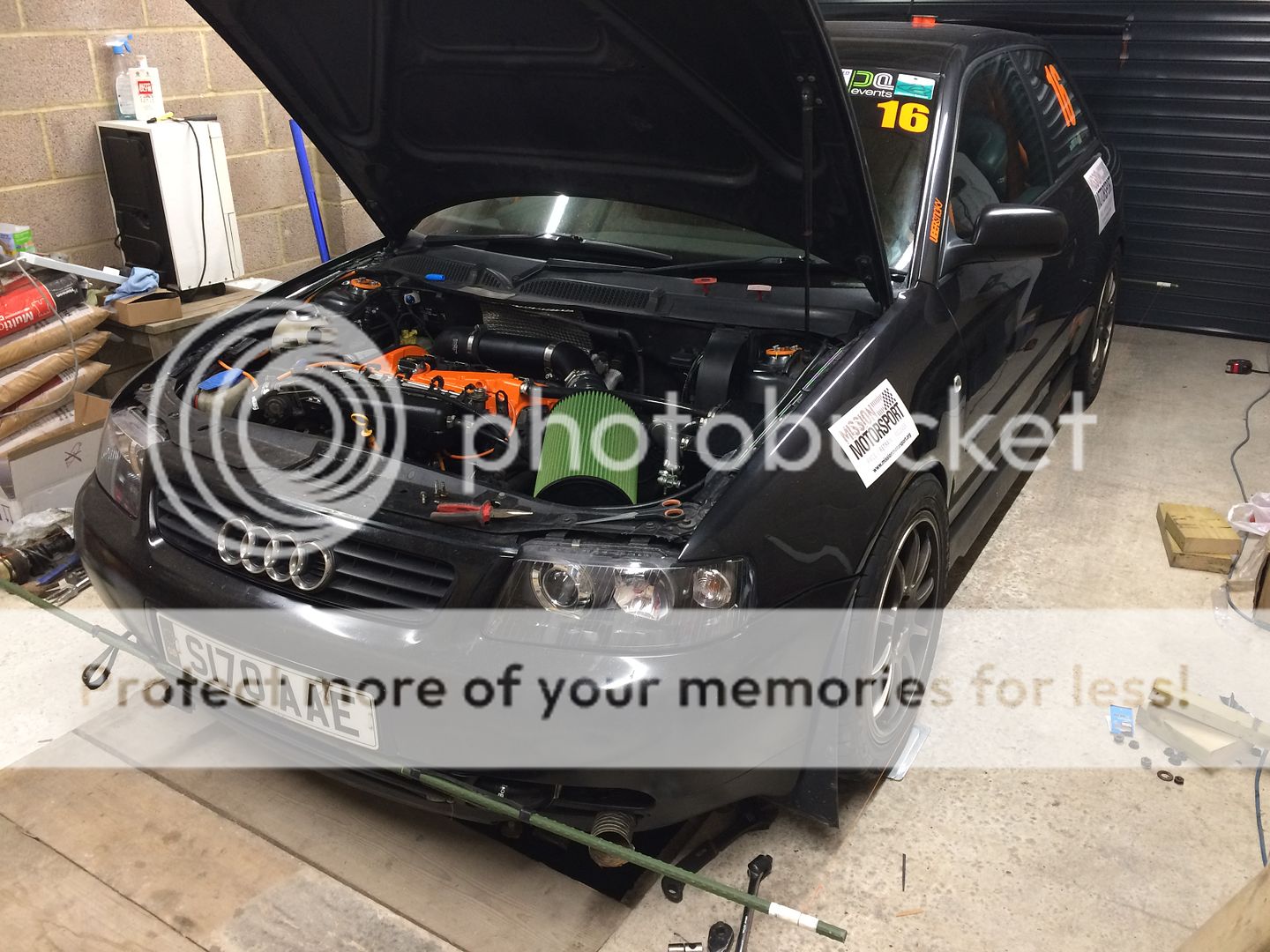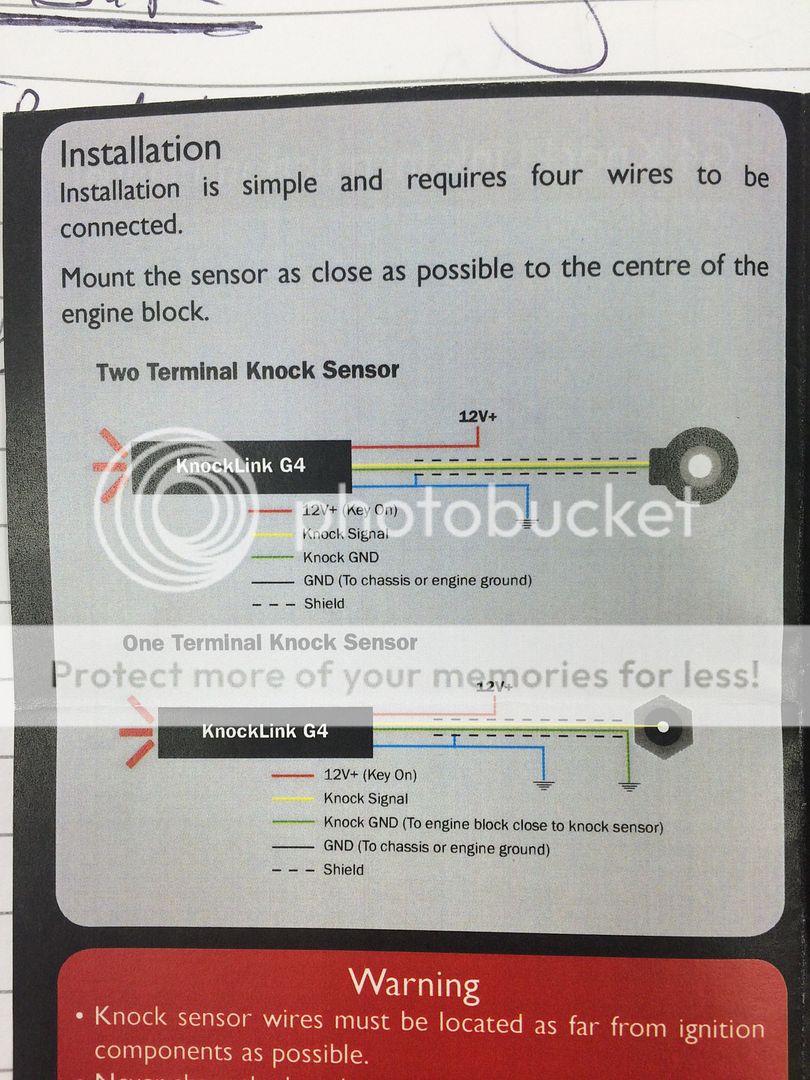I marked up where to grind away on the ball joint:
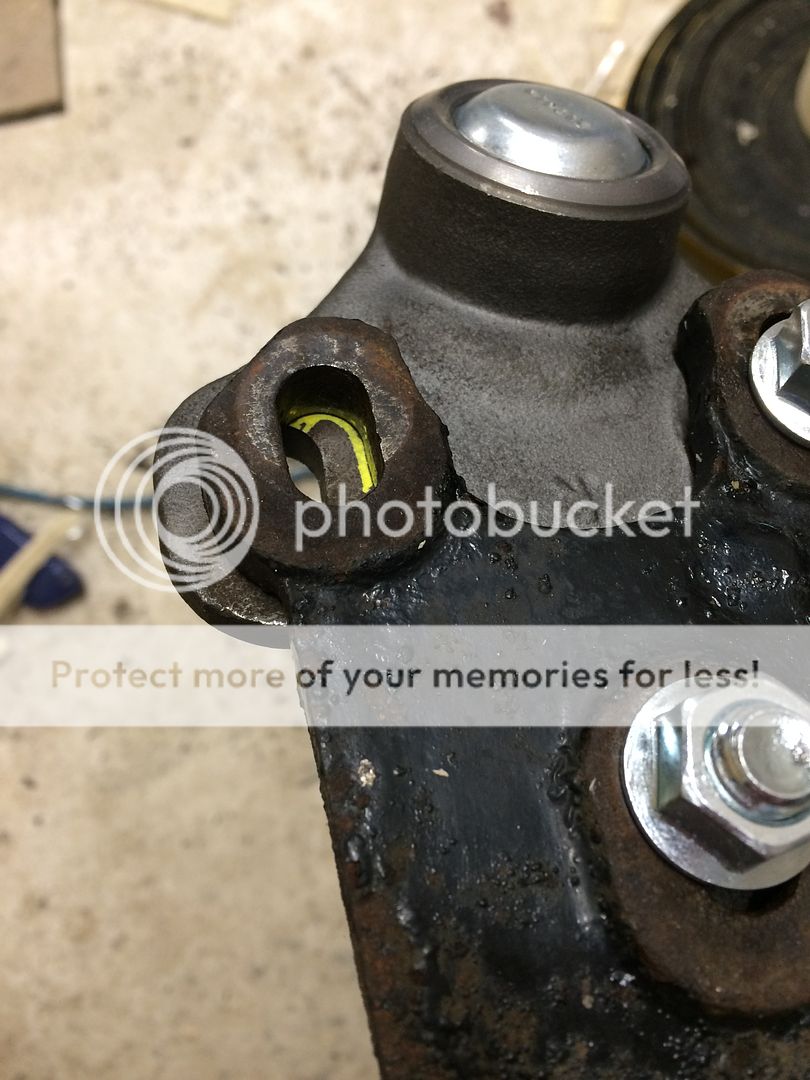
Then got busy with the dremel and carbide burrs:

I've been suffering from this all week, as the tiny steel splinters seemed to get EVERYWHERE, mainly in my hands, and I've been finding splinters all week!
With this done on both joints, I bolted them up, and paint pen'd the bolts to enable easy checking in future:


In Hindsight, I wouldn't have bothered torquing / paint marking the bolts at this stage, as I'll end up adjusting them further before first use.
And here we have one pair of wishbones, new front bushes, and mk2 TT ball joints ready to go back on:

Wishbones back on, with brand new bolts, and all torqued up to 52lbft +90 degrees, then paint pen marked again:

I put the wheels back on, lowered the car back to the ground, and stood back to see what I'd created

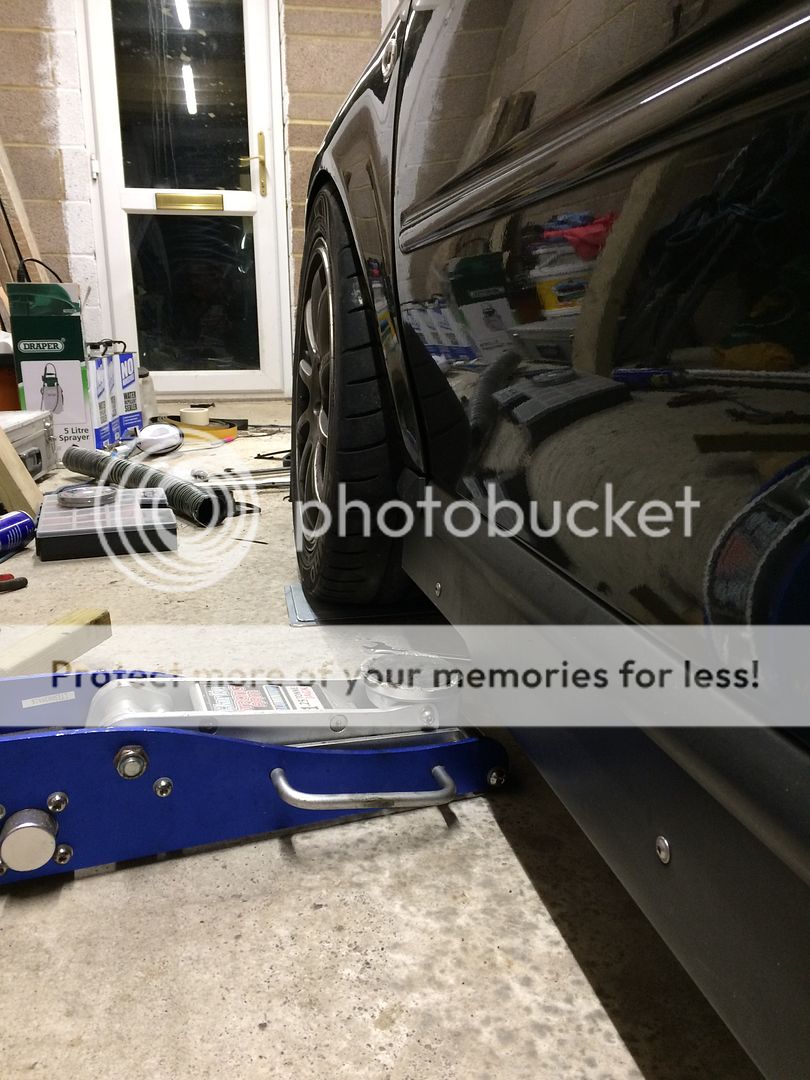
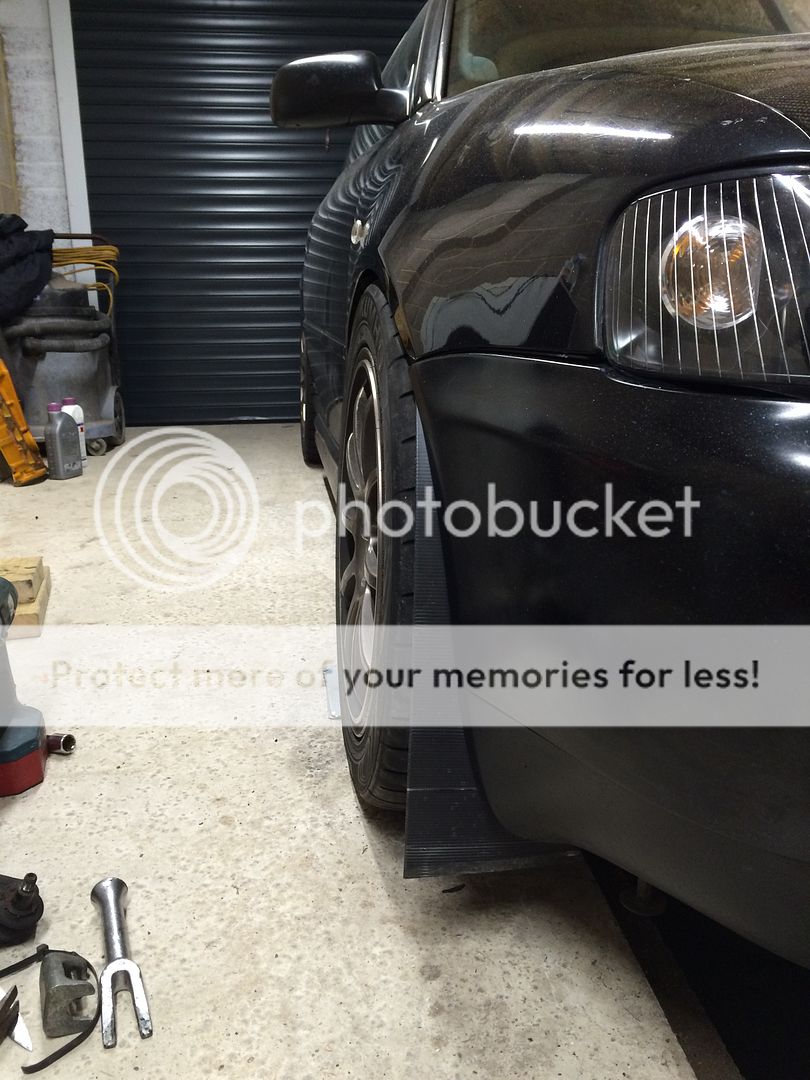
First thoughts - it looks WIDE.
Quick camber check:

-4.4 degrees on one side, and -4.6 on the other!

Having pushed it outwards at the bottom of the hub, the whole wheel has moved on an outward arc, so the track width at ground level is probably a good 30mm wider than before, and this really shows then looking at the front wheels from behind. there is a lot more tyre visible when looking down the door line.
As a result of pushing the ball joints outwards, tracking has obviously been thrown off too.
Not by a little bit, but probably by a good 10 degrees each side. The wheels really did point like this: \______/ to the point where I couldn't actually roll the car forward or backward at all, such was the resistance.
Moving the steering with the car on the ground is incredibly stiff as I'm sure you all know. With lots of added caster, and sticky 235 tyres, and a small steering wheel, mine is even heavier than most.
I've seen these done before by others, and decided now was the time to make my own:

2x galv plates, with some CV grease smeared over them:

Placed in front of the wheels, and the car rolled forward onto them:


They are fantastic. With the car on the slide plates, I can turn the steering wheel as if the car were jacked up, with absolutely no resistnace at all.
This means that as I'm adjusting toe the wheels are free to turn, and not binding with the ground, so I should get true toe repeatable toe readings.
Keen not to consign myself to an early grave, I decided to investigate track rod thread length, rather than simply wind the track rods out until the tracking was correct.
There was every chance at this stage, that without this check, I could have unknowingly wound the track rods to within a few threads of the end, and one heavy wheel impact could have seen us lose all steering. Not something I wanted.
I unwound both track rods fully until the came away from the rod ends, and counted 23 threads of engagement on each track rod.
I consulted google, and a few peoples who's opinion I value, and decided that minimum thread engagement of 10 threads was the least I'd be happy with.
I wound each track rod 10 threads into the rod ends, and just on a visual, it appears to now be slightly toe in, so I'm satisfied that when it's aligned properly I'll have more than 10 threads in each rod end.
Next up is to make up a DIY alignment rig, using fibreglass garden canes and some bright orange fishing line




